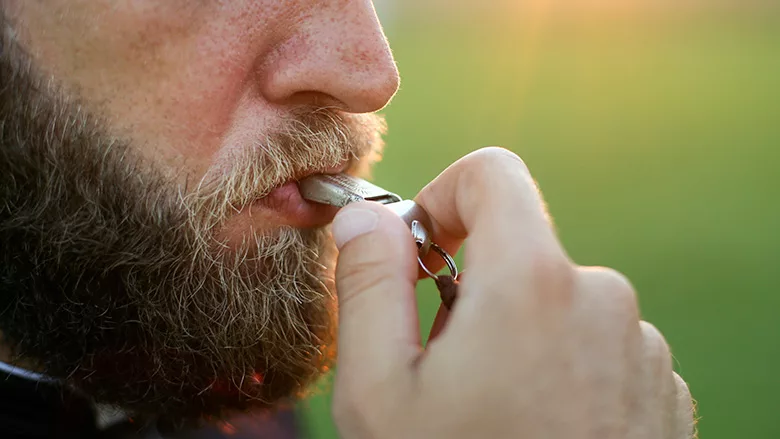Creative Training Techniques to Motivate Employees and Achieve Company Goals

Photo: GoodLifeStudio / E+ via Getty Images
If you can believe it, there was a time when I was entrusted to coach young athletes in the beautiful sport (aka soccer). Inevitably I hit a wall of frustration that many managers and leaders can relate to: no one was listening. In the heat of the moment, I remembered the approach from my own childhood sports experiences—“Just make ’em run!”—which was often more about punishment than productivity. While enforcing discipline is key to sports and business, on this grass field surrounded by little rascals I had a brief moment of revelation and decided to try something different.
Instead of demanding compliance with an order to run laps, I made a small tweak and reframed discipline into something engaging. I threw a soccer ball onto the field and turned it into a competitive drill. Two players raced to the ball: one played offense and the other defense. They ran, hustled and worked hard—but instead of complaints, there was enthusiasm and laughter. This simple shift got the kids moving (run, you turds) but also improved their skills in dribbling, defending, and competing under pressure.
That moment of innovation didn’t just help me on the soccer field; it taught me a valuable lesson that applies to leading teams in the workplace. Achieving goals isn’t always about doubling down on discipline; it’s about finding creative solutions that make the process engaging and effective.
The Frustration of Standard Training Approaches
For many managers, training employees can feel like shouting into the void. Traditional methods—long meetings, repetitive workshops or endless checklists—often fail to inspire engagement. Employees may check the box but aren’t always learning or improving. Similar to my soccer coaching experience, doing what you have learned from prior managers, i.e. repeating old mindsets and habits, likely results in resistance, frustration, and minimal results for all involved. However, a little creativity can turn routine training into a purpose-driven activity that achieves more than just compliance.
Three Creative Training Strategies for Managers
Here are three strategies to rethink how you train and engage your team:
1. Reframe Challenges as Games
Just like turning running drills into a competitive soccer exercise, you can gamify training tasks in the workplace. Gamification taps into employees' intrinsic motivation by adding elements of competition, collaboration and rewards.
- Example: Instead of having employees sit through a long PowerPoint on new procedures, create a quiz-based game with points and prizes for correct answers.
- Why It Works: Games make learning fun and encourage active participation, turning mundane activities into opportunities for growth and engagement.
2. Focus on the Underlying Goal
When I shifted my focus from “get them to run” to “help them develop skills while running,” the results improved drastically. In the workplace, this means thinking critically about what you want employees to achieve, not just the tasks you want them to complete.
- Example: If the goal is to improve collaboration, don’t just hold a team-building seminar. Instead, set up a project that requires cross-departmental teamwork to solve a real problem the company is facing.
- Why It Works: Purpose-driven activities align employee efforts with the company's objectives, making the training feel relevant and valuable.
3. Build Skills Through Real-World Practice
The best training happens when employees are actively doing, not just observing. Like the soccer players learning to dribble under pressure, employees benefit most from hands-on experiences that mirror the challenges they’ll face in their roles.
- Example: If you’re onboarding new employees, pair them with experienced team members for job-shadowing sessions where they can observe, ask questions, and then try tasks themselves.
- Why It Works: Experiential learning boosts confidence, reinforces key concepts, and accelerates skill development.
Turning Frustration into Innovation
As managers, it’s easy to get stuck in frustration when employees don’t respond as expected. But as I learned on the soccer field, stagnation should be a prompt for innovation. Instead of doubling down on what isn’t working, step back and ask yourself these questions:
- What is the ultimate goal I want to achieve?
- How can I make the process more engaging or meaningful?
- What creative alternatives could achieve better results?
This mindset shift can lead to breakthroughs that benefit your team, your sanity and your achievement of organizational goals.
When I introduced the competitive running drill to my soccer players, it didn’t just solve the problem of getting them to listen—it made the practice more enjoyable, increased their skills, and improved our overall performance. Similarly, in the workplace, creative training strategies don’t just address immediate challenges; they also build stronger, more capable teams. Employees who feel engaged and valued are more likely to invest in their work and collaborate effectively. Rather than rinse, repeat and reuse old methodologies, taking time to step back can lead to simple innovations with drastic long-term outcomes.
You don’t need to reinvent the wheel to transform your training approach. Often, a simple tweak—like reframing a task as a game or connecting training to real-world applications—can make a significant difference. Take the time to observe what isn’t working, brainstorm creative solutions, and experiment with new ideas. As you see results, continue refining your methods and sharing your successes with your team. Together, you can turn training into a powerful tool for achieving company goals, one creative solution at a time.
Success isn’t always about running harder; often it is the result of simply engaging with your team over a series of small but meaningful improvements.
Looking for a reprint of this article?
From high-res PDFs to custom plaques, order your copy today!








